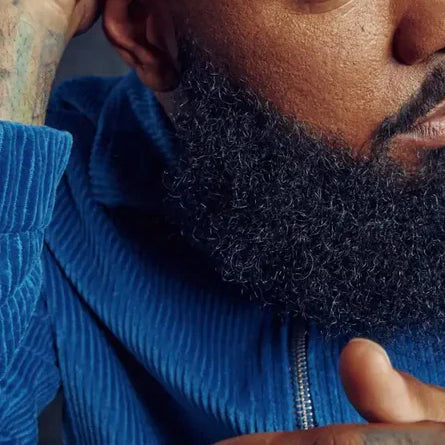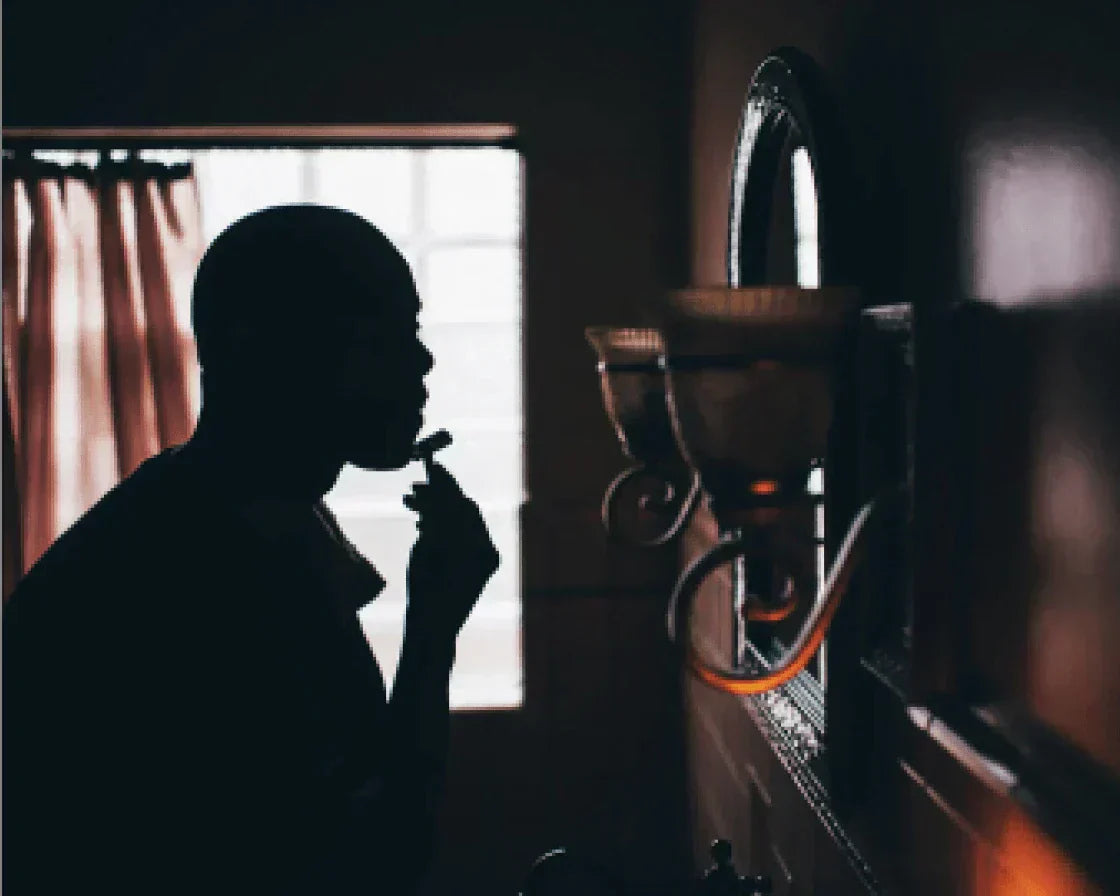Words by Chaedria LaBouvier
The barber pole, whether sun-faded or in technicolor, is one of the most ubiquitous symbols of the barbershop. From Chaucer’s references in the Canterbury Tales to the hugely popular Barbershop movie franchise, the barber pole is one of the most visible visual icons in the aesthetic culture of barbershops. It’s also one of the most widely recognized symbols whose meaning no one really knows.
“There was a shop that I went to that had [the pole],” says Bryan Green, 16, of Los Angeles. “I just went in and got my hair cut. I don’t really know what it means.”
So what does it mean exactly?
First, let’s start with the colors. The significance of the colors emerged during the Middle Ages when barber shops were essentially medical trap houses. These “barber–surgeons” and their shops operated with a lack of supervision and regulation that allowed them to give patron-patients a line up, a hair cut, perform a phlebotomy (bloodletting), do minor surgery, reset broken bones and pull teeth. After the Catholic Church banned its priests and clergymen from most medical practices and since physicians felt that bloodletting was beneath their expertise (it would’ve been considered the equivalent of a doctor writing a prescription for Advil) barbers became responsible for the most invasive of treatments if for no other reason they had (some) skill with sharp instruments. “In medieval London, barbers placed bowls of their clients’ blood in their windows ensuring that even the most oblivious passerby stopped and took notice,” says Dr. Lindsey Fitzharris, a notable medical historian.
Since most of the populace was illiterate, including many of the barbers themselves, the barber pole became a way to advertise their services. “It was a not-so-subtle reminder that you may be overdue for your own bloodletting, like those glossy cards that your dentist sends you in the mail every 6 months with the picture of a grinning toothbrush,” says Fitzharris. But in 1307, “a law was passed that stated: ‘no barbers shall be so bold or so hardy as to put blood in their window… [and] the barber pole emerged from there,” writes Fitzharris. The red in a barber pole represents bloodletting, while the white was meant to signify the bandages used to wrap the wounds. The blue is said to represent the non-oxygenated blood in the veins. The downward spiral of the modern pole signifies the direction of the aortic flow of blood in the body.

By the mid 1700’s, bloodletting went out of favor as a popular practice and the significance of the barber pole evolved to solely signify grooming services. During slavery and afterwards, grooming became associated with Blackness, as Black barbers developed a reputation for their versatility for being able to work with a variety of hair types. This reputation only increased as Emancipation and post-Reconstruction saw many Black men and women commercializing their barbering and grooming skills with the creation of barbershops and beauty parlors. As they took the barber pole along with them, it marked the beginning of its unique symbolic relationship with Black barbershop.
“When someone enters a barbershop for the first time, they enter based on a referral or they spot that barber pole. They go back to the same shop, first and foremost, because the barber tightened him or her up real good,” says Quincy Mills, author of Cutting Along the Color Line: Black Barbers and Barber Shops in America. “The barber pole also, and importantly, represents the skill, artistry and creativity of the men and women standing behind the barber’s chair wielding scissors and clippers.”
THE BEST BARBERS HAVE A CERTAIN CULTURAL CAPITAL THAT SUPPORTS THEIR AUTHORITY AND EXPERTISE. THE BARBER POLE SPEAKS TO THAT ARTISTRY.
It was the artistry of Black barbers, that attracted many of the White patrons that flocked to Black barbershops for grooming, despite segregation. Many White men, having grown used to Black grooming and its aesthetics during slavery, were reluctant to switch to White groomers. In Cutting Along The Color Line, a White barber in the-turn-of-the 20th century Durham complained, “It was difficult to change the habits of whites that had grown accustomed to particular black barbers. We found it impossible to get them to change to our shops.”
Through the 20th century, as Black America planted civic roots in the post-Reconstruction South and in the North during the Great Migration, Black barbershops changed their style and aesthetics, from the opulent shops of Alonzo Herndon in Atlanta to the mom-and-pop style shops that came to color many neighborhood corners. Whether high brow or laid back, the Black barbershop was an institution that changed with Black America, becoming a place for social and political gatherings and discourse – and the barber pole went with it. If skill and authenticity of barbershops depended upon its ability to marry old school ethics of excellence and trade with the contemporary, there was never a more important icon of heritage for a barber and his shop than the barber pole.
“Aesthetics are critical to Black barber shops because these are businesses and public places of style,” explains Mills. “The best barbers have a certain cultural capital that supports their authority and expertise. The barber pole speaks to that artistry.”
Dennis Mitchell, aka “Denny Moe”, a barber and proprietor of the popular Harlem barbershop “Denny Moe’s Superstar Barbershop”, agrees.
“I do have [one],” he says. “Being in this game for 34 years, it’s embedded in me. [It’s] cultural familiarity…most people don’t know the significance behind the pole, but they do know if they see that pole that’s where they can get grooming service[s].”
The barber pole and its place in the barbershop are not just merely aesthetics. Serving as an unofficial town hall in the Black community, barbershops often doubled as a place where people gathered not just for grooming but mobilize politically. Thomas Parker, 75, who also worked as a “clean-up boy” as a teenager growing up in Little Rock remembered the political roundtable of his barbershop.
“Back in the ‘50s, a lot of the conversations were about integration,” he remembered. “’Would it work? Would it not?’ Like anything else, you had the critics and the people that said ‘why not?’, but either way, the barbershop was a place to discuss those kinds of things.”

Barbershops were public spaces that were legal, essential to the community and with a “large Black waiting public”, were able to gather a large number of people to spread, debate or host ideas and thought forums. “The power of Black barbershops is its economic base [but also] its community capital,” explains Mills. “Those barbers and their shops become central to a community’s fabric and politics.”
The de-facto town hall status of the barbershop in the Black community allowed it be a safe meeting place where the diverse opinions of Black America could meet, free of the over-surveillance that often accompanied Blackness in public spaces. In the first half of the 20th century, when a number of African-Americans became Communists after being disillusioned with the rhetoric of the Democratic and Republican parties, the barbershop was a place where those members were able to discuss and disseminate party information at a time when the mere suspicion of being “Red” was enough to have one thrown in jail. The potency of this public space was also recognized by more mainstream political bodies. The NAACP began suggesting political reading lists during elections in the 1940’s that could serve as “ammunition for some fine barber-shop arguments.” The concentration of Black voters and their discussion of politics in the barbershop has remained enduringly attractive into the 21st century. In 2008, The New York Times produced a series in which a reporter went to Black barbershops in New York City to ask patrons about their thoughts on then-presidential candidate Barack Obama.
As president, Obama, who himself has had the same Chicago-based barber for two decades, has also used the potency of the barbershop during his term in office; his Fatherhood and Mentoring Initiative, Fatherhood Buzz, launched by going into barbershops to start the dialogue about ways for men to be more present and active in their children’s lives. When asked about the decision to go into the barbershop, the director of the program, Kenneth Braswell said in an interview with The Root, “[they’re] a trusted space to discuss personal and public issues.”
It’s not just politics that has noticed the gravitas of the barbershop; Hollywood too is paying attention. There have been two movies produced on the Black barbershop experience, bluntly titled, Barbershop, with a third in the works. For both movies, the barber pole figures prominently in the advertising imagery of the fictional Calvin Jr’s barbershop on the South Side of Chicago.
“It’s also been used to represent barbershops for so long that it brings a layer of history and authenticity, which is why I think all of the posters for the ‘Barbershop’ franchise featured it,” says Tracy Oliver, screenwriter of the upcoming Barbershop 3. “Having [it]…helps make the movie feel more authentic.”
As gentrification looms in many predominately African American neighborhoods that sees many Black residents leaving due to soaring prices, the place of the barbershop – and its pole – might be endangered. And as they leave, they take some of the neighborhood’s creativity, imagination and grit along with them. As the barbershop must now compete with rising rents caused by gentrification, it remains to be seen what role momand-pop barbershops will have in a street corner landscape increasingly dominated by luxury condos and retail banks. “We are the townhall, the information Mecca, the community safe haven,” says Denny Moe on the barbershop’s place and necessity.
From the Middle Ages (and bloodletting) to its current metaphor for excellence in the Black barbershop, the barber pole has an incredible history. The barber pole is “like ‘x’ marks the spot,” says Denny Moe “It’s what the Golden Arches are to McDonald’s and what the Swoosh is to Nike. It’s worldwide.”



